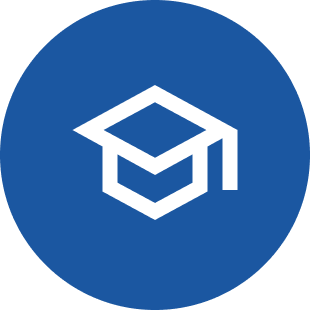Over six years of transformation, HAND has woven its path between relief and development—a path that places people and humanity first. We measure impact not just in numbers, but in classrooms where dreams grow safely, in tents that nurture hope, and in hot meals that restore warmth to displaced families. Our programs have reached 1,064,121 beneficiaries through 92 projects across 9 sectors, powered by a team of 966 professionals working within 13 departments (51% women).
Starting from Lebanon, where our institutional presence is firmly rooted, and supported logistically from Dubai, we expanded in 2024 into Syria by opening a main office in Damascus and two regional offices in Homs and Aleppo to cover all governorates. In Lebanon, we remain close to the people through a central office in Beirut and four field offices in Akkar, Arsal, Aramoun, and Bar Elias. These locations represent more than a map—they reflect our real capacity to respond swiftly and effectively.
Education… Partnerships That Build Hope
We believe education is the cornerstone of a better future—and that the best solutions are built together. With The Digital School and the Abdulla Al Ghurair Foundation, learning continuity became a reality—not just a slogan. We supported 45 schools reaching 16,883 students, trained 622 teachers on safe identification and referral, and provided 518 teachers with digital teaching skills. In Baalbek, the summer program gave 532 students both academic and psychological momentum to return confidently to their new school year.
With Plan International, we expanded our reach to 1,620 additional students, rehabilitated four schools in Zahle and Baalbek, and provided students with stationery and technology. Between 2019 and 2024, we delivered 46,632 learning opportunities through 59 schools and centers, benefiting 241,927 children. In Syria, we rehabilitated 17 schools in Homs and Aleppo, creating safe learning environments for over 18,500 students. These aren’t just new seats—they represent the return of childhood to its rightful place.
With Pearson, we opened the BTEC HND pathway for Syrian and Lebanese youth to pursue higher education through a flexible vocational track that reconnects learning with the labor market.
Shelter and WASH… Solutions That Preserve Dignity
With UNHCR and LHF/OCHA, we combined innovative and rapid-impact solutions: rental assistance for 708 families, rehabilitation of 37 collective shelters, and WASH interventions benefiting 2,227 individuals. The “high-resilience shelter” model in the Bekaa became a reference for sustainable shelter improvement within funding constraints, thanks to a training model that produced local teams capable of installation and maintenance.
From restoring the Umayyad Mosque in Damascus—where stones bear witness to history—to improving camp sites and fire preparedness systems, we worked to ensure safe roofs, clean water, and gentler winters. Our programs reached 47,163 beneficiaries through 17 projects, including emergency responses to fires and storms, in close collaboration with municipalities and civil defense.
Food and Basic Needs… Warmth That Arrives on Time
Amid a complex crisis, our interventions protected the most vulnerable families from sinking deeper into poverty. We reached 775,031 beneficiaries through cash and in-kind assistance, Ramadan and Eid campaigns, and “Sahim,” which connects donor generosity with respect for family choices. During the war in Lebanon, our community kitchen in Zahle prepared 36,786 hot meals for 20,529 beneficiaries (4,286 families). Because in times of crisis, food is not a luxury—it is psychological and social safety.
Faces That Give Meaning… A Methodology That Leads the Future
Serina, who returned to touch her dream through continuity classes; Wael, who entered his school year with confidence toward medicine; Maha, who broke the isolation of her wheelchair in an inclusive school; Rola, who moved from receiving aid to building stronger shelters for others; and Maany, who opened the door to reading for the first time in her life… These stories show that numbers come alive when they become human.
We design our programs in five steps: precise needs assessment, followed by intervention design, then implementation governed by standards, with ongoing monitoring and evaluation to adjust course in real time. This methodology is anchored in values of inclusion, integrity, professionalism, and partnership, and aligns with the Sustainable Development Goals. It ensures impact that lasts beyond the project’s end.
Between Lebanon and Syria, our next mission is clear: broader coverage, deeper partnerships, and greater investment in blended education, TVET, and sustainable shelter—with a commitment to reach every child, family, and community in need.
